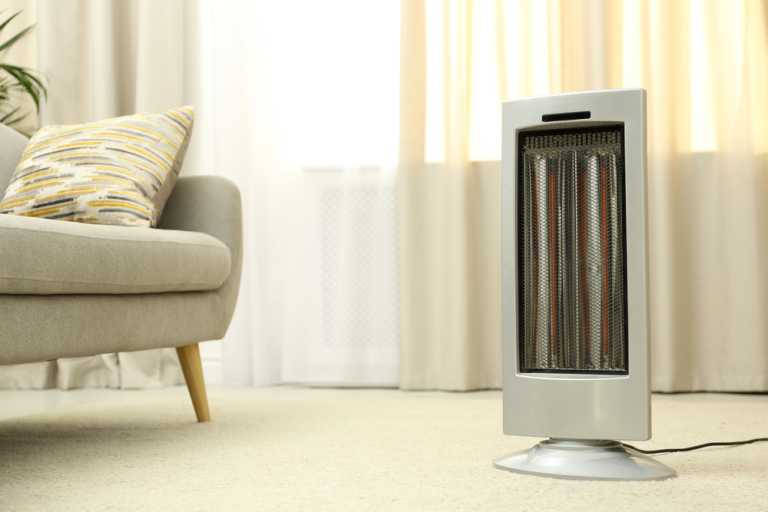Swaddling can be a game-changer when it comes to comforting and soothing your baby. But what happens when your newborn starts protesting and wants their hands out of their swaddle?
Unfortunately, it’s not safe to let your little one wriggle free each night. But don’t worry! We’re here to help you figure out why they want their hands free and what you can do about it.
How Do You Know if Your Baby Wants Their Arms Out of the Swaddle?
Some babies love being swaddled, some can’t stand it, and others like the slight compression on their chest but want their hands free.
Figuring out what your newborn likes is tricky, but here are some good signs that they want their arms out:
- They often get their hands free.
- They wriggle and fuss while swaddled.
- They wake up frequently while swaddled.
- They love sucking on their hands and fingers when they can.
Why Might a Baby Want Their Arms Out of the Swaddle?
Swaddling with the arms out can seem counterintuitive. After all, one of the things that makes it so effective is that it blocks the Moro, or startle reflex. That’s the one that causes your baby to throw out their arms in response to a noise or sudden movement.
However, having access to their hands is so important for babies. Not just for their development, but also for relaxation and sleep. Here’s why:
Hand-to-Mouth Reflex
In order to survive, babies must be born with a natural instinct to suck. In the womb, they have no access to a breast, so they practice on their hands and fingers instead.
This instinct to bring their hands to their mouth continues after birth, causing frustration when a swaddle gets in their way.
Self-Soothing
Some newborns love to suck their thumbs or fingers to self-soothe.
Communication
Vigorous hand-sucking is one of the first ways your baby can communicate hunger without crying.
Swaddling their hands blocks this early form of communication and can cause frustration.
Natural Positioning
Your newborn’s natural posture is to have their knees and hips flexed and their elbows bent. Swaddling them with their arms straight by their sides fights against their natural position and can cause discomfort.
If your baby falls asleep out of their swaddle, look at the position of their arms. This is their most comfortable posture if they have them bent across their chest or up by their head.
What to Do if Your Baby Keeps Getting Their Arms Out of the Swaddle
If your newborn removes their hands from the swaddle, it’ll mean loose fabric in their crib. This poses a risk of Sudden Infant Death Syndrome (SIDS), so you’ll need to make some changes.
Check Your Swaddle
The first thing to do is check your swaddling technique. Yes, there’s a good chance your baby wants their hands out. But there’s also a possibility that one of the following issues could be the problem:
- The Swaddle Is Too Loose
If your swaddle is tight enough, you should only be able to fit two fingers between the fabric and your baby’s chest. Any more, and it’s too loose. This will let them wriggle free, posing a suffocation risk due to the excess fabric.
- The Swaddle Is the Wrong Size
Swaddles that are too large or too small will unwrap easily. Ensure you’re using lightweight fabric between 44 and 47 inches square. Or, buy a velcro or zip-up swaddle suitable for your child’s weight.
- The Fabric Is Touching Their Cheek
If material brushes up against your newborn’s cheek or face, it can trigger the rooting reflex. This means they’ll start searching for a nipple, which could wake them. To avoid this, always swaddle in a pattern that resembles a v-neck sweater.
- It’s Too Tight Around The Legs and Hips
Swaddling your baby’s legs and hips in an unnatural position can lead to issues like hip dysplasia. So always ensure that they can move their legs and bend their knees freely.
- Your Baby Is Too Hot
Only ever swaddle with a lightweight cotton cloth to prevent your little one from overheating.
Also, keep their room between 68 and 72 degrees Fahrenheit, or 20 to 22 degrees Celsius. If in doubt, choose a swaddle with mesh panels for airflow and use a room thermometer to check the temperature.
If you’ve established that there’s nothing wrong with your swaddling method but your baby Houdini still keeps wriggling out, don’t worry. You have lots of options:
Move On From the Swaddle
The simplest solution is to move on from a swaddle to a sleep sack. This mimics the coziness of the swaddle while giving them full freedom of movement.
It’s also the safest thing for your little one to sleep in, as it means no loose blankets or bedding in the crib. Plus, it won’t stress their joints.
Swaddle Below the Arms
Try a new swaddling technique that only wraps below the arms. While it won’t stop the Moro reflex, the slight chest compression is still a comforting feeling. Plus, they’ll have access to their hands to self-soothe.
Swaddle One Arm in and One Arm Out
Leaving one arm free will allow your child some access to self-soothe while minimizing the startle reflex. Just remember to alternate the arm you wrap.
A great idea is to try a product like a 3-way swaddle sleep sack. These allow you to experiment with none, one, or both arms out to see which your little one likes best.
Swaddle With Arms up or Bent
You can also try swaddling your little one with their arms across their chest or bent up towards their mouth. This is less secure than swaddling with arms straight down. However, if your little one is more comfortable, they’re less likely to try to wiggle free.
Try an Arms-up Swaddle
As so many babies prefer their hands up, it’s now possible to buy zip-up swaddles that allow for the arms up position. Some even have removable sleeves, so you have the option to try arms out too. These are incredibly useful for the transition out of swaddles at 2 months old.
Offer a Pacifier
If you suspect your baby is wriggling their hands free to self-soothe, try a pacifier. This will allow your little one to suckle without needing access to their fingers. As a safety bonus, pacifiers lower the SIDS risk, as mentioned in the AAP safer sleep guidelines.
When to Stop Swaddling
If your baby is strong enough to get their hands out, it could mean it’s time to stop swaddling. This can be daunting, as the technique is a sleep lifeline for many parents. However, continuing to swaddle when your little one can roll poses a high risk of SIDS.
Rolling typically happens around the age of 3 to 4 months, but early rollers can start at just two months old. Many experts start to worry about swaddling after eight weeks. So, it’s best to switch to a sleep sack or blanket sooner rather than later.
It’s time to stop swaddling if your baby:
- Has lost their Moro or startle reflex.
- Can roll onto their side.
- Is lifting up onto their arms during tummy time.
- Is wriggling free overnight.
- Is rocking side to side on their back.
- Is lifting both legs and rocking side to side.
- Is throwing both arms over to one side.




